Cargo Overview
Florida’s Largest Port…and Growing
Global Connections Shaping Florida’s Growth
The Port of Tampa, now known as Port Tampa Bay, traces its origins to the late 19th century when Henry B. Plant’s railroad and steamship line connected Tampa to global trade routes, transforming a small Gulf Coast town into a thriving maritime hub. Initially centered on the phosphate and cigar industries, the port grew steadily with Florida’s expanding economy. Over time, it evolved into the state’s largest and most diversified seaport, handling bulk commodities, petroleum, containers, and cruise passengers. Today, Port Tampa Bay stands as a critical gateway for international commerce, regional distribution, and tourism, shaping Florida’s economic growth.
Our Capabilities
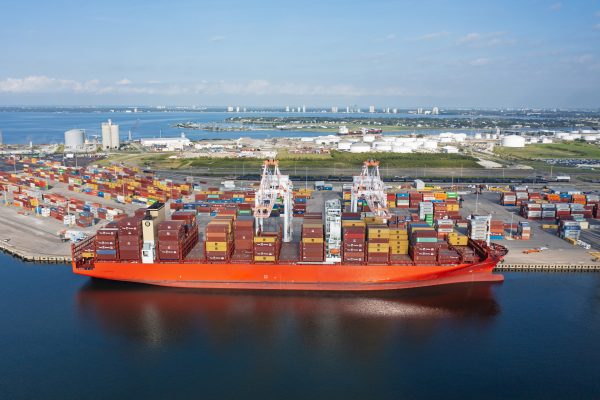
Global Connectivity Drives Trade
Port Tampa Bay is redefining supply chain efficiency with new and expanding direct services to Asia, Mexico, and Central America. It’s a rising force in Florida’s container market. Strategically anchoring the state’s I-4 Corridor, home to nearly half of Florida’s 23 million residents and the majority of its 146 million annual visitors, the port is a clear and vital asset to the highest concentration of distribution centers in the state.
From this central hub, importers and exporters gain a competitive edge with lower trucking costs, faster delivery times, and reduced carbon emissions. Retail, e-commerce, food and beverage, and manufacturing sectors are increasingly turning to Port Tampa Bay to meet growing demands for same-day service and tighter delivery windows.
In partnership with Ports America, the port continues to scale up: now featuring a 100-acre container terminal (with a third deep-water berth underway), a new gate complex, and six post-Panamax cranes to handle increasing volumes with speed and precision.
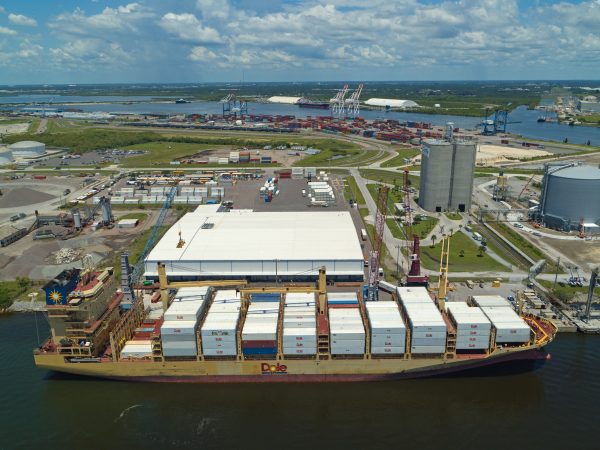
Your Cold Chain Command Center
Near the heart of Florida’s grocery and food & beverage distribution corridor, Port Logistics Refrigerated Services offers a state-of-the-art, 14-acre, 135,000-square-foot, on-dock, cold storage facility designed for speed, scale, and freshness. The terminal has a 700-foot berth equipped with two dedicated mobile harbor cranes – ensuring fast, efficient cargo handling. The facility was purpose-built for high-performance logistics.
It features:
- On-site refrigerated fumigation services.
- Advanced glycol refrigerant cooling system.
- 250 reefer plugs for maximum container capacity.
- USDA and CBP inspection labs for seamless compliance.
A Windfall for Perishable Importers and Exporters
Enhanced ocean container services now include weekly sailings from Costa Rica via SeacatLine, and new weekly routes from Honduras and Guatemala through Dole Ocean Cargo Express – bringing Central America’s freshest goods straight to Florida’s doorstep.
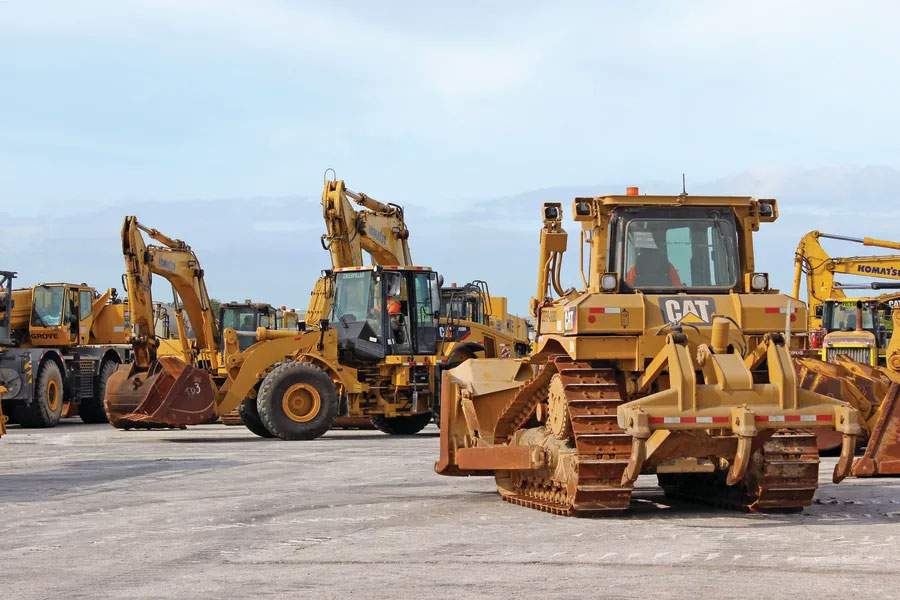
Your Global Trade Advantage
The Tampa Bay/I-4 Corridor Foreign Trade Zone (FTZ) is a launchpad for international success. It helps importers (and exporters too) streamline operations, slash costs, and boost competitiveness. Whether you're importing, exporting, manufacturing, or distributing, the FTZ delivers powerful advantages that elevate your logistics strategy, enhance compliance, and improve cash flow.
FTZ companies unlock benefits by aligning operations with import/export strategies, leveraging duty deferral, reducing fees, and optimizing logistics. Success depends on goods, direction, volume, and a location near major distribution corridors for faster turnaround and multi-modal transportation access.
The benefits span every mode of transportation – ocean, air, rail, truck, and pipeline – and almost every commodity and industry. From food-grade goods and pharmaceuticals to steel, cosmetics, and heavy machinery, FTZ #79 can be a strategic asset for long-term growth and global reach.
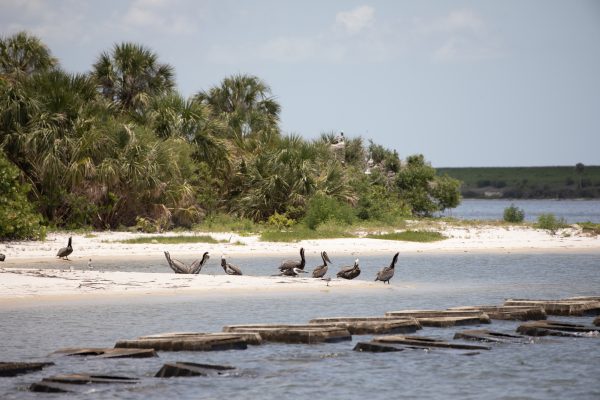
Commerce Meets Conservation
Port Tampa Bay has been ahead of the curve on environmental stewardship since the 1970s, when it became one of the first U.S. ports to launch a dedicated environmental department. Today, that commitment is woven into everything the port does. From stabilizing shorelines and restoring wetlands to cleaning up waste and improving water quality, the port takes a hands on approach to protecting Florida’s coastal treasures.
One of its most unique efforts is a partnership with the U.S. Army Corps of Engineers. Together, the two maintain and improve Tampa Bay’s deep shipping channels – vital for the region’s economy – while also creating unexpected havens for wildlife. The sand and soil dredged up from these channels are placed on disposal islands in Hillsborough Bay, which end up looking and functioning like natural beaches. Each spring, thousands of terns, gulls, skimmers, and oystercatchers flock to these islands to nest, a phenomenon so important that BirdLife International and the Audubon Society have recognized its global significance.
To keep the birds safe, dredging is carefully scheduled outside the April–August nesting season, and biannual Migratory Bird Protection Committee meetings ensure operations stay birdfriendly. The result? A thriving partnership that successfully balances commerce with conservation.
Port Tampa Bay is a powerful ally for coastal ecosystems.
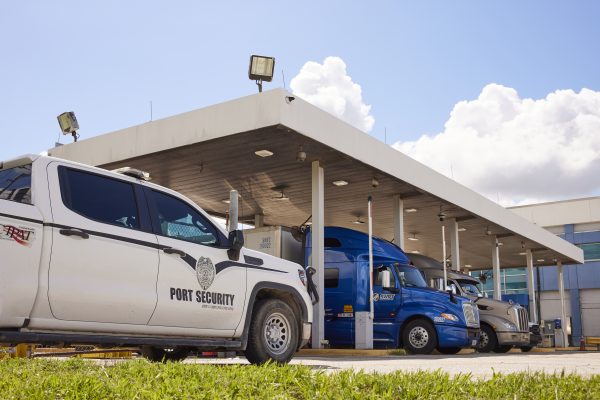
Reliable, Resilient, Ready
At Port Tampa Bay, safety isn’t just a priority – it’s a promise. Working around the clock, a dedicated Safety and Security Department creates a safe, resilient, and welcoming environment for the workforce and everyone who visits or does business at Florida’s largest port.
With a cutting-edge Security Operations Center running 24/7, the port keeps a close eye on access control, patrols, and emergency response, all in partnership with the Hillsborough County Sheriff’s Office and other trusted law enforcement allies.
Tampa Bay was the first U.S. port accredited under the National Maritime Law Enforcement Academy’s Port Digitization and Maritime Security Accreditation Program. The name may be long, but it’s an important one, reflecting the gravity of seaport security in today’s world. The port expertly blends physical, digital, and cyber protections to safeguard critical infrastructure, cargo, and passengers. Thanks to generous federal security grants, the port continues to invest in stronger facilities, including a heavy weather building, and it regularly trains with local, state, and federal agencies to stay sharp and ready.
This dynamic, all-in approach reflects Port Tampa Bay’s unwavering commitment to protecting lives, assets, and commerce, while fueling the port’s role as a vibrant economic engine for the region. Safety here isn’t just serious business – it’s smart, proactive, and built to help the community thrive.
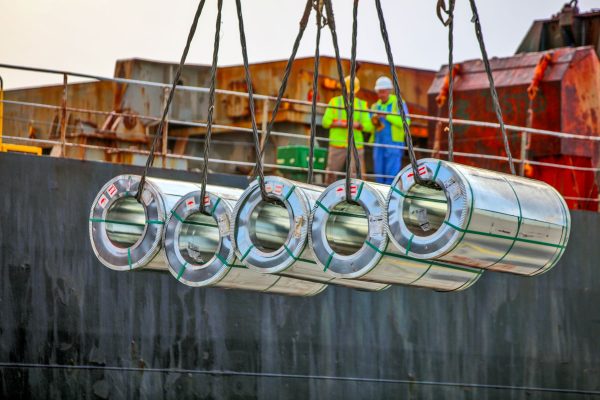
Florida's expanding economy demands new building and construction projects, which rely on building materials to accommodate this growth. Port Tampa Bay has long been a critical gateway for supplying many of the materials needed. This includes steel, aluminum, bagged cement and other building materials, as well as project cargo and heavy lift. Among all of its break-bulk commodities, steel is the most significant, and Port Tampa Bay continues to be Florida's largest steel port. This includes the shipment of scrap metal and important outbound cargo. Recent new breakbulk business includes regular shipments of lumber delivered by break-bulk carrier Ultrabulk serving the home improvement and construction sectors. The port's breakbulk capacity includes more than 6,000 feet of berth and nearly 500,000 sq. ft. of warehouse space and laydown area. With an abundance of land and intermodal infrastructure improvements, the port has steadily increased its capacity and created innovative ways to bring breakbulk and other products to market.

Since the discovery of phosphate in Central Florida in the late 1800s, bulk commodities have long been the foundation of Port Tampa Bay. Today, phosphate fertilizer and related products continue to be a cornerstone for export activity as Florida-produced fertilizer is shipped to agricultural markets around the globe to help the world grow the food it needs. The bulk sector remains Port Tampa Bay's largest cargo tonnage segment, and the port's commitment to this sector is stronger than ever. That includes both dry and liquid bulk commodities. Beyond phosphate and fertilizer, dry bulk commodities also include aggregates such as: granite, limestone, cement, gypsum, and other related construction materials, which support West Central Florida's booming building and construction market. Port Tampa Bay is also the energy gateway for all of West Central Florida, serving as the delivery hub for almost 15 million tons a year of various petroleum related products, including gasoline, diesel and aviation jet fuel for the region's major airports. In fact, more than 43% of Florida's petroleum moves through Port Tampa Bay, and the public-private partnership to upgrade the REK Petroleum Terminal Complex solidified the port's role as the region's energy gateway for decades to come. Punctuating the diversity of the port's liquid bulk cargo activity is the import and export of citrus juice concentrate.
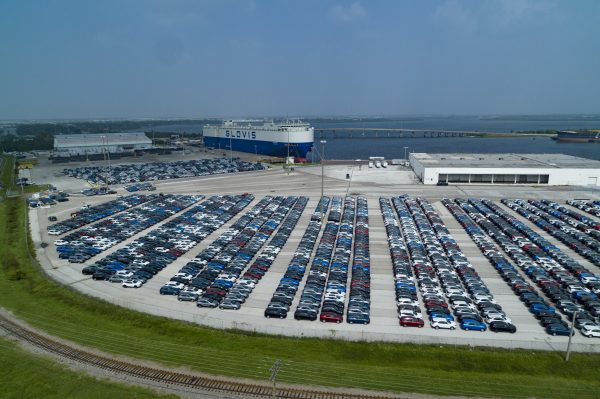
Given the proximity of Tampa to Mexico, one of the world's largest automotive producing countries, as well as Tampa's central location in the third largest state for vehicle purchases, cross-Gulf shortsea shipping to Port Tampa Bay delivers vehicles in a timely and cost efficient manner. In response to this market development, Port Tampa Bay has invested in terminal facilities dedicated to handling new automobiles and is well positioned to improve an auto manufacturers' supply chain strategy. Delivering by shortsea transport improves time to market, significantly reduces the potential for damages to vehicles, and improves processing and distribution efficiencies.
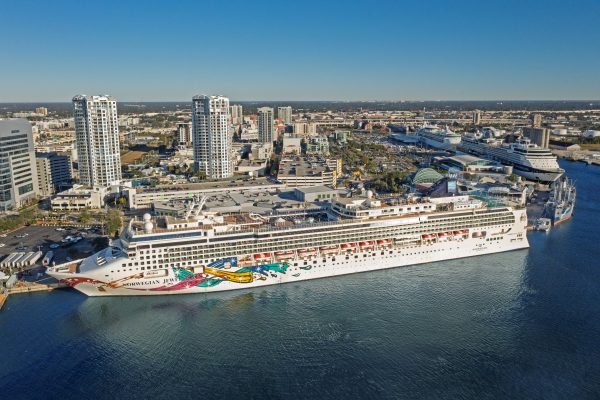
Port Tampa Bay is Florida’s Gulf Coast cruise port offering a variety of cruises from 4-day to 14-day itineraries throughout the Caribbean. With eight homeported vessels operated by Carnival Cruise Line, Celebrity Cruises, Royal Caribbean International, Norwegian Cruise Line, and Margaritaville at Sea it is no wonder that more than 1.5 million passengers a year choose Tampa to embark on their cruise vacation. With a global reputation at stake, port and city officials work with the tourism industry to roll out the welcome mat. Whether a short ride from Tampa’s award-winning international airport, or a two-minute drive off the I-4, guests enjoy the ease of getting to port’s world-class cruise terminals. And, there are great pre and post cruise options to consider, including such tourist favorites as the Florida Aquarium, the Riverwalk, Sparkman Wharf, Water Street’s shops and restaurants, and Ybor City. And if you want to explore outside the city but still nearby there are plenty of other attractions to explore such as some of the world’s best rated beaches, theme parks, craft breweries, and restaurants. Tampa Bay is the heart of the Gulf Coast.

Port Tampa Bay is the largest Florida port by tonnage and land. Today, the port has more than 1,000 acres of industrially zoned land with deep-water access, with room to expand cargo facilities. Port Tampa Bay real estate sites are ideal for cargo handling operations, as well as manufacturing, logistics services, and warehousing/ transit shed operations. In addition to its vast supply of deep-water properties, the port also has available 265 acres of non-waterfront real estate, perfect for industrial and maritime-related use. Ground transportation, including CSX Rail and the interstate highway system, is easily accessible. These Port Tampa Bay sites located on Hookers Point, South Bay and Port Redwing, also provide convenient product transference by being strategically positioned at the intersection of major east-west and north-south shipping trade lanes. Moreover, with the addition of two new postPanamax container gantry cranes at the port's container terminal, Port Tampa Bay continues to further diversify itself as it expands its global footprint. In recent years, the port has continued to diversify its portfolio at Port Redwing in southern Hillsborough County. To service the more than 50 acres available at Port Redwing and 135 acres at South Bay, the port has made available for a month by month a common area to facilitate the periodic transfer of goods for our off water front tenants. The area is served by the Big Bend Channel, which was recently deepened to 43 feet and widened to 250 feet through an innovative “P-5” funding coalition of five entities: the Federal government through the U.S. Army Corps of Engineers, the State of Florida through the Florida Department of Transportation, Port Tampa Bay, Mosaic, and Tampa Electric-an Emera company.
Frequently Asked Questions
How do I schedule a shipment?
- If you are scheduling a shipment for export or import via Port Tampa Bay, visit our Sailing Schedule page to contact one of our ocean carriers.
- If you need help with your logistics, there is a list of Customs Brokers and Freight Forwarders in our online Directory.
What will Port Tampa Bay charge me to ship my shipment?
No, individual shippers are not charged. Rates are charged to the port terminal operators and ocean carriers.
How do I track my shipment?
- Contact your Customs Broker, Freight Forwarder and/or Ocean Carrier to help track your shipment.
Can I ship goods to Europe or South America via Port Tampa Bay?
Visit our Sailing Schedule page to view all of our ocean carriers. Multiple connection points are available.
Does the Port sell shipping containers, how to buy containers?
- The Port does not own or sell shipping containers.
- For a listing of companies that do sell containers please, visit our online Directory under 'container & chassis sales, lease & repair'.
I bought an item from (insert country) and it says that the item is coming to Tampa?
"Tampa" does not mean that the "Port of Discharge" is the Port of Tampa/Port Tampa Bay.
Check your paperwork and review the Port of Discharge or the Final Destination.
Having a Freight Forwarder and/or Customs Broker can be very helpful.